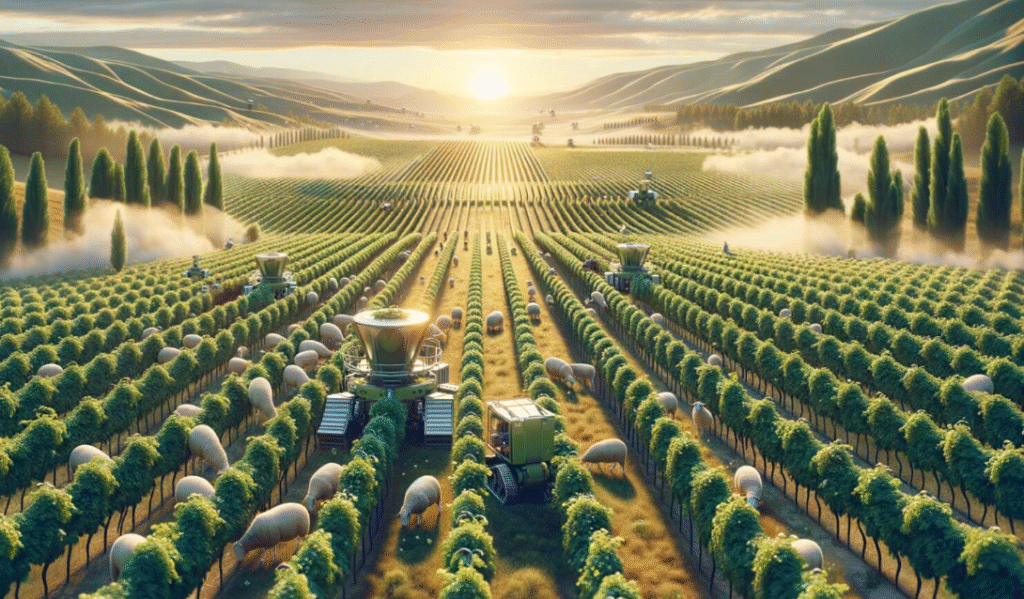Introduction
Australia’s agricultural sector is undergoing a significant transformation in 2025, driven by the integration of advanced technologies aimed at enhancing productivity, sustainability, and resilience. From artificial intelligence to gene-edited crops, these innovations are addressing challenges such as climate change, labor shortages, and the need for efficient resource management. This article delves into the key technologies poised to redefine Australian agriculture.

1. Artificial Intelligence (AI) and Data Analytics
AI is increasingly becoming integral to Australian farming practices. Farmers are utilizing AI-powered drones and sensors to monitor crop health in real-time, enabling precise interventions and resource optimization. These technologies assist in predicting weather patterns, pest outbreaks, and soil conditions, facilitating proactive decision-making. The integration of AI enhances efficiency and supports sustainable farming practices.
2. Robotics and Autonomous Machinery
The adoption of robotics is addressing labor shortages and improving operational efficiency on Australian farms. Companies like SwarmFarm Robotics have developed autonomous machines capable of tasks such as fertilizing, weeding, and soil tilling. These robots operate with precision, reducing environmental impact and allowing farmers to focus on strategic planning.
3. Gene-Edited Crops
Advancements in gene editing are leading to the development of crops with enhanced yields and resilience. Australian trials of gene-edited wheat aim to increase productivity by 10%, utilizing techniques that modify the plant’s genome without introducing foreign DNA. This approach accelerates breeding processes and contributes to food security and climate adaptation.
4. Climate-Smart Agriculture
In response to climate variability, Australia is investing in climate-smart agricultural practices. Programs like the Climate-Smart Agriculture Program support initiatives that enhance sustainability, productivity, and competitiveness. These efforts include the adoption of drought-resilient cropping systems and improved land management strategies.
5. Internet of Things (IoT) and Smart Farming
IoT devices are revolutionizing farm management by providing real-time data on soil moisture, weather conditions, and crop health. These insights enable farmers to make informed decisions, optimize resource use, and increase yields. The integration of IoT technologies is a cornerstone of precision agriculture in Australia.
6. Satellite Imaging and Remote Sensing
Satellite technology is enhancing agricultural monitoring and planning. Farmers utilize satellite imagery to assess crop conditions, detect stress factors, and manage land use effectively. This remote sensing capability supports large-scale farming operations and contributes to efficient resource allocation.
7. Bio-Innovations and Sustainable Inputs
Australian agriculture is embracing bio-innovations to promote sustainability. Companies are developing microbial solutions that enhance soil health and carbon sequestration. These biological inputs reduce reliance on chemical fertilizers and support environmentally friendly farming practices.
Conclusion
The convergence of advanced technologies is propelling Australian agriculture into a new era of innovation and sustainability. By adopting AI, robotics, gene editing, and climate-smart practices, the sector is addressing contemporary challenges and positioning itself for a resilient future. Continued investment and collaboration among stakeholders will be essential to realize the full potential of these technological advancements.